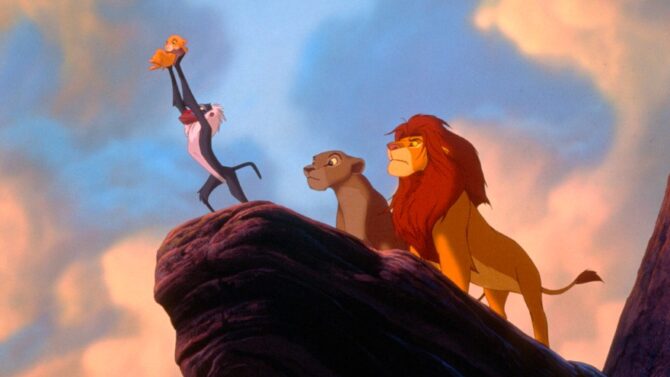Gambia, the smallest country in mainland Africa, is home to a variety of fascinating and exotic wildlife.
From the majestic African elephant to the nimble bushbuck, the country boasts an array of creatures that are a delight to watch.
However, there are also several dangerous animals in Gambia that can be deadly to humans and other animals.
These range from venomous snakes to ferocious predators and can pose a serious threat if encountered.
In this article, we will take a closer look at the top 10 deadliest animals in Gambia, their behaviors, threats, and what precautions you can take to avoid them.
Whether you’re a resident or a tourist, it’s essential to be aware of these creatures and how to stay safe in their presence.
What are the Most Dangerous Animals in Gambia?
1. West African Crocodile

- Scientific name: Crocodylus suchus
- Habitat: Deserts, lagoons, wetlands
- Threats: Aggressive predators, known to attack humans when threatened or defending their territory
The West African crocodile is also known as the desert crocodile and the sacred crocodile.
It can be found in Madagascar and many West African countries, including Nigeria, Cameroon, Benin, and the Gambia.
It is similar to another African-based crocodile known as the Nile crocodile, and they are often confused with each other.
The West African crocodile is smaller, however, and less dangerous.
That said, it is aggressive, and there have been some fatal cases. It is best to avoid any crocodile you meet in the Gambia.
2. Hippopotamus
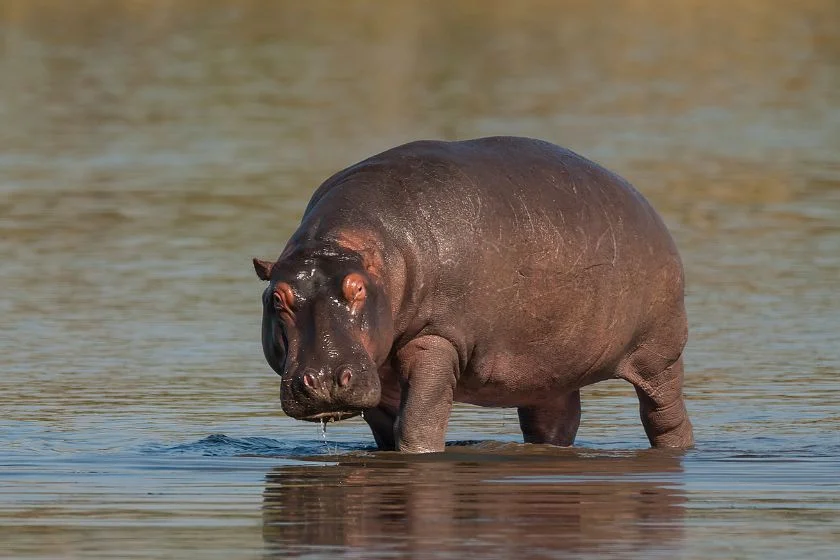
- Scientific name: Hippopotamus amphibius
- Habitat: Rivers, lakes
- Threats: Large and aggressive animals with powerful jaws and teeth, can attack boats and humans in or near the water
The hippopotamus goes by many other names, including the hippo, the river hippopotamus, and the common hippopotamus.
Though vulnerable, it can be found in different African countries, including Uganda, Tanzania, and the Gambia.
Hippos are herbivores and do not attack humans with a predatory instinct.
However, they get aggressive toward humans, and they have even attacked boats.
Their size gives them an advantage, and any attack from them can cause injuries.
3. Black Mamba
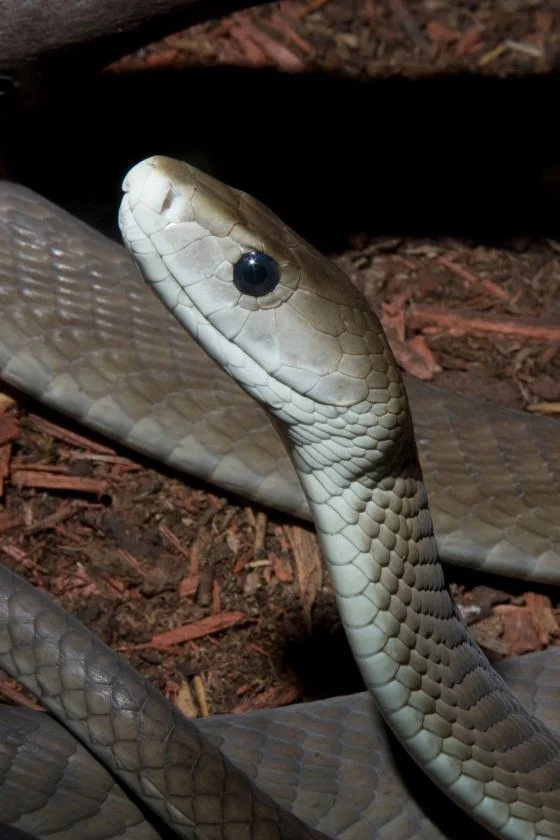
- Scientific name: Dendroaspis polylepsis
- Habitat: Light woodland, moist savanna, lowland forests
- Threats: Fast-moving and highly venomous snakes, known to be aggressive when threatened and can deliver a lethal bite
The black mamba is a native of Africa, specifically in countries like Burkina Faso, South Sudan, Ethiopia, Tanzania, Malawi, South Africa, and the Gambia.
The black mamba is highly venomous, and it is the second longest venomous snake after the king cobra.
In Africa, the black mamba is greatly feared due to a combination of its aggressiveness, size, and a good dose of venom.
Unlike other snakes that don’t attack preemptively, the black mamba has no such restraint. Its venom is deadly, and a bite can kill.
4. African Buffalo

- Scientific name: Syncerus caffer
- Habitat: Savannas, hills, woodlands
- Threats: Large and powerful animals that can be unpredictable and aggressive, known to charge and attack humans and other animals when threatened
The African buffalo is a herbivore, but while it isn’t a predator, it can be very dangerous.
As its name implies, the African Buffalo can be found in different African countries.
The horns are its biggest weapon, and it can turn into a nightmare for whoever it attacks.
The African buffalo is called “black death” and “the widowmaker,” hinting at its risk.
According to an article on a similar subject, the African buffalo kills over 200 people a year.
5. Anopheles Mosquito

- Scientific name: Anopheles
- Habitat: Marshes, rice fields, stagnant waters
- Threats: Blood-sucking insects known to transmit diseases such as malaria, which can be fatal if left untreated
The Anopheles is a genus of mosquito species, with over 400 in number.
Anopheles is often associated with malaria, but only 100 are known to cause this illness.
In any case, this is what makes the anopheles mosquito a dangerous insect.
Statistics show that malaria leads to the death of about one million people annually, a lot of which are young children, making the mosquito the most dangerous animal in the world.
Your kids are more at risk from a mosquito bite than you are, so you should protect them.
Have insect repellent at hand to ward off these mosquitoes, and if you or your loved ones get bit, seek medical help immediately.
6. Leopard

- Scientific name: Panthera pandus
- Habitat: Savanna, rainforest, grasslands
- Threats: Agile and stealthy predators, can humans in rare cases and cause serious injury or death
The leopard can be found on many continents, from Africa to Asia.
Amongst other wildcats, the leopard is one of the most beautiful, with its black spots—called rosettes—and yellowish skin.
However, the leopard is a predator and doesn’t seem to have any fear characteristic of prey.
Thus, it is dangerous to humans and may attack without provocation. There are cases of attacks caused by leopards, such as this one.
7. Slender-snouted Crocodile
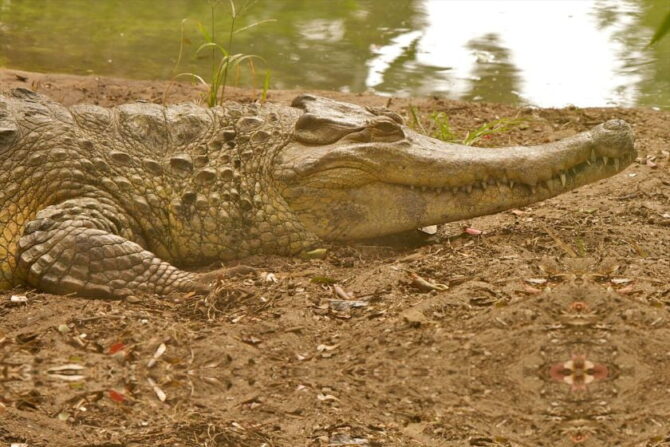
- Scientific name: Mecistops catapchratus
- Habitat: Rivers, lakes
- Threats: Aggressive predators with strong jaws and teeth, can attack humans when threatened or defending their territory
The slender-snouted crocodile is one out of five species in Africa, standing alongside the West African crocodile.
You might not see this crocodile as much as the West African crocodile because the slender-snouted crocodile is critically endangered.
But it is still widespread in many African countries, including Nigeria, Mali, and the Gambia.
Just like other African crocodiles, the slender-snouted crocodile is a predator and a danger to humans.
It can attack without provocation, and though this crocodile is dwindling in number, you might still find it around freshwater bodies. As a general rule, avoid any crocodile you meet.
8. American Cockroach
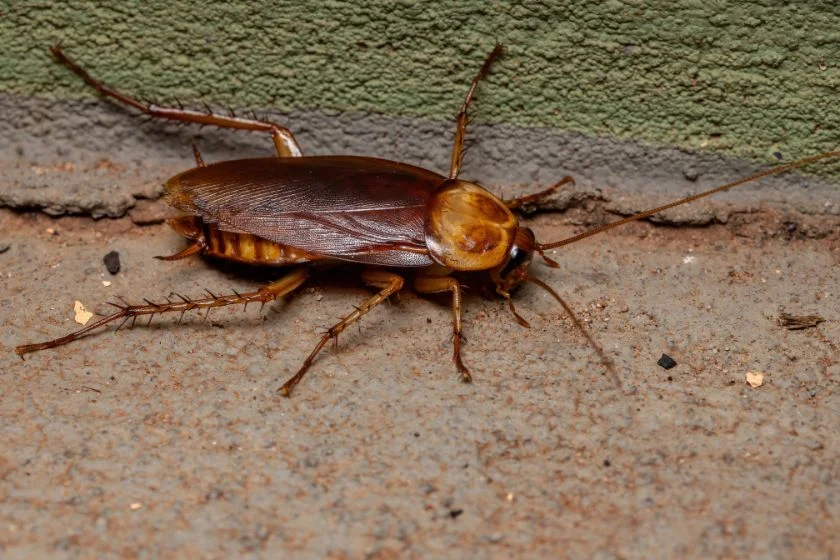
- Scientific name: Periplaneta americana
- Habitat: Hollow trees, woodpiles
- Threats: Known to carry disease-causing bacteria and can trigger allergies in some people
The American cockroach’s name is misleading because this cockroach species isn’t a native of America.
It rather comes from Africa and the Middle East, only moving into America due to commerce.
Like the other cockroach on this list, the American cockroach isn’t dangerous in and of itself. However, it can cause disease.
The American cockroach can cause food poisoning as they are attracted to human food, and they drop bacteria on it, including salmonella.
The odor secretion can also change a food’s flavor and even ruin the environment. Other diseases an American cockroach can cause are dysentery and diarrhea.
9. Black Widow Spider
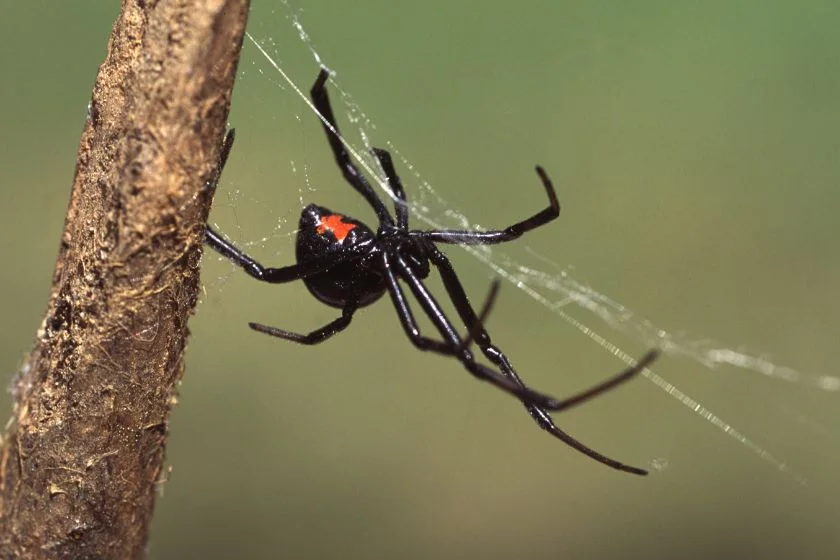
- Scientific name: Lactrodectus menavodi
- Habitat: Crevices, woodpiles
- Threats: Venomous spider, bites can cause muscle pain, cramps, and spasms
The black widow spider (from which we got the black widow character) is a popular spider species whose venom can land you in a hospital. These spiders are widespread.
The black widow spider isn’t an aggressive animal and is more likely to avoid a human. However, it will bite if it feels threatened.
10. Cheetah
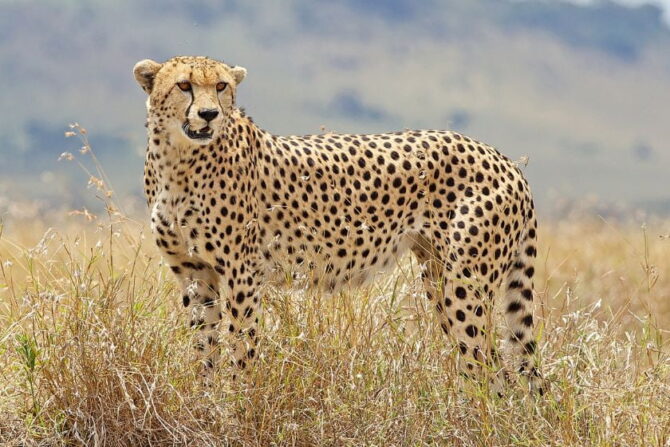
- Scientific name: Acinonyx jubatus
- Habitat: Shrubland, grassland, savannah
- Threats: Fast and agile predators can become aggressive if threatened or cornered
If you haven’t known by now, the cheetah is the fastest-moving land animal living in the world today.
It is a part of the Felidae (cat) family and bears a strong resemblance to the leopard. The obvious difference is in the pattern of their spots.
The cheetah is less dangerous compared to the leopard, but it shouldn’t be approached as that could make it feel threatened.
The speed and agility of the cheetah make it a formidable predator, so it shouldn’t be underestimated.
Gambia Wildlife Safety Tips
Ready to explore African nature but bothered about the animals? These safety tips could help you have both a fun and secure experience.
They include:
- Use an insect repellent when going outdoors, and pack an insecticide in case you find yourself dealing with a cockroach outbreak. Ensure that the hotel or lodging you stay in is pest free.
- Be cautious around a hippopotamus, crocodile, and buffalo. If possible, do not go to areas where these animals can be found.
- Many stray dogs and cats live in the Gambia, and they can put you at risk of rabies. They tend to be wary of humans because of the hostile reputation they get from the locals, but still, stay away from them. Do not touch and feed them.
- The only dangerous snake known in the Gambia is the black mamba. Others are less venomous, but it is common sense not to touch a snake.
Related Questions
Are there wild animals in the Gambia?
There are many wild animals in the Gambia, though not all are considered dangerous. Except for predators like the crocodile, these animals tend to stay on their own.
What is the most common animal in the Gambia?
The most common animal in the Gambia seems to be the monkey. Baboons are also popular in the Gambia, and you might see some antelopes too.
Are there poisonous snakes in the Gambia?
Most snake species in the Gambia are not venomous, but there are still dangerous snakes to look out for. There are 41 snake species in the Gambia, and 9 are considered highly poisonous.
Are there monkeys in the Gambia?
There are many monkeys in the Gambia, all of which can be regrouped into six species: the vervet monkeys, baboons, chimpanzees, the red colobus monkey, the red patas, and bush babies.
Conclusion
The Republic of Gambia offers a lot to tourists, which includes rich wildlife.
Knowing that not all of these animals are friendly would help you respect their space while keeping yourself safe.
Of course, there are a lot more animals to see, so if you stay away from crocodiles and other creatures on this list of most dangerous animals in Gambia, you’re not missing much!
Up Next
- Man-Eaters: Top 15 Deadly Animals That Eat Humans
- Top 20 Most Dangerous Animals in the World
- 10 Most Venomous Snakes In The World (Poisonous & Dangerous)

